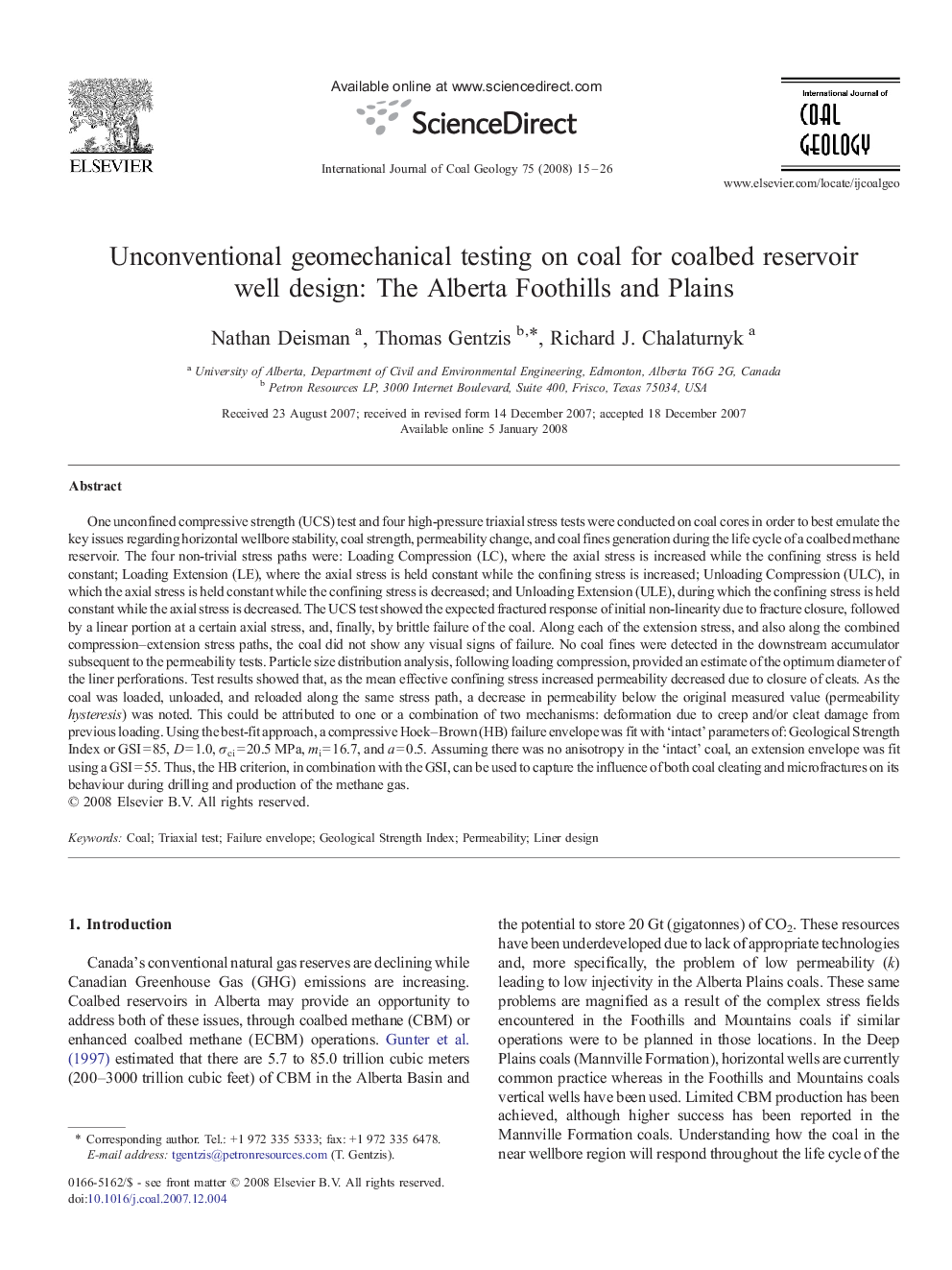| کد مقاله | کد نشریه | سال انتشار | مقاله انگلیسی | نسخه تمام متن |
|---|---|---|---|---|
| 1754201 | 1522646 | 2008 | 12 صفحه PDF | دانلود رایگان |

One unconfined compressive strength (UCS) test and four high-pressure triaxial stress tests were conducted on coal cores in order to best emulate the key issues regarding horizontal wellbore stability, coal strength, permeability change, and coal fines generation during the life cycle of a coalbed methane reservoir. The four non-trivial stress paths were: Loading Compression (LC), where the axial stress is increased while the confining stress is held constant; Loading Extension (LE), where the axial stress is held constant while the confining stress is increased; Unloading Compression (ULC), in which the axial stress is held constant while the confining stress is decreased; and Unloading Extension (ULE), during which the confining stress is held constant while the axial stress is decreased. The UCS test showed the expected fractured response of initial non-linearity due to fracture closure, followed by a linear portion at a certain axial stress, and, finally, by brittle failure of the coal. Along each of the extension stress, and also along the combined compression–extension stress paths, the coal did not show any visual signs of failure. No coal fines were detected in the downstream accumulator subsequent to the permeability tests. Particle size distribution analysis, following loading compression, provided an estimate of the optimum diameter of the liner perforations. Test results showed that, as the mean effective confining stress increased permeability decreased due to closure of cleats. As the coal was loaded, unloaded, and reloaded along the same stress path, a decrease in permeability below the original measured value (permeability hysteresis) was noted. This could be attributed to one or a combination of two mechanisms: deformation due to creep and/or cleat damage from previous loading. Using the best-fit approach, a compressive Hoek–Brown (HB) failure envelope was fit with ‘intact’ parameters of: Geological Strength Index or GSI = 85, D = 1.0, σci = 20.5 MPa, mi = 16.7, and a = 0.5. Assuming there was no anisotropy in the ‘intact’ coal, an extension envelope was fit using a GSI = 55. Thus, the HB criterion, in combination with the GSI, can be used to capture the influence of both coal cleating and microfractures on its behaviour during drilling and production of the methane gas.
Journal: International Journal of Coal Geology - Volume 75, Issue 1, 13 June 2008, Pages 15–26